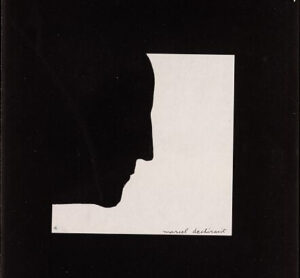Hannah Höch
Da-Dandy — 1919
A Veil Water Implant
Hannah Höch seems to have known at least part of the story.
In Da-Dandy, she doesn’t just use the halftone background, she builds her entire composition around what now appears to be a profiled figure of Duchamp, carefully silhouetted against that veiled field. And surrounding him? Pearls—one of Dada’s visual codes for bourgeois femininity, already active in Duchamp’s and Man Ray’s work.
Taken together, these elements suggest Höch wasn’t working randomly.
She was working within a shared visual language—referencing
figures in her circle, using their cues, and repurposing their imagery
with precise, pointed intent.
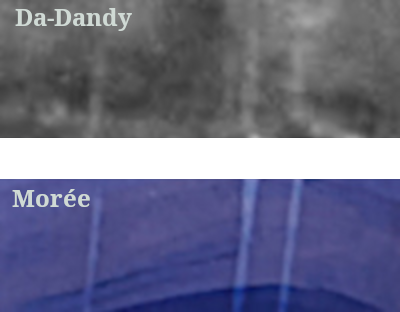
A Slow Burning Fuse
You may—or may not—have seen it right away, but in Da-Dandy,
there is a silhouette of a male figure, outlined in profile.
At first glance, the figure appears to be a collage of tropes:
a fragmented dandy, an anonymous mannequin, a critique of bourgeois masculinity.
For over a century, scholars have decoded what he represents—
but few have asked who he might actually be.
Until now.
When viewed alongside Morée, the reading shifts.
The figure’s posture, the pearls draped near him, the distinct downward gaze—
These are not generic features. They are deliberate. They rhyme with another image.
The background itself—a grainy halftone swirl evocative of Veil Water—
echoes a texture we’ve seen only in two other places:
first in Belle Haleine, and earlier still, in Morée.
This isn’t just Dada parody. It seems to be a citation.
And the figure at the center may not be a stand-in for masculinity in general—
but for a particular man.
It may be a portrait—unofficial, quietly embedded—of Marcel Duchamp himself.
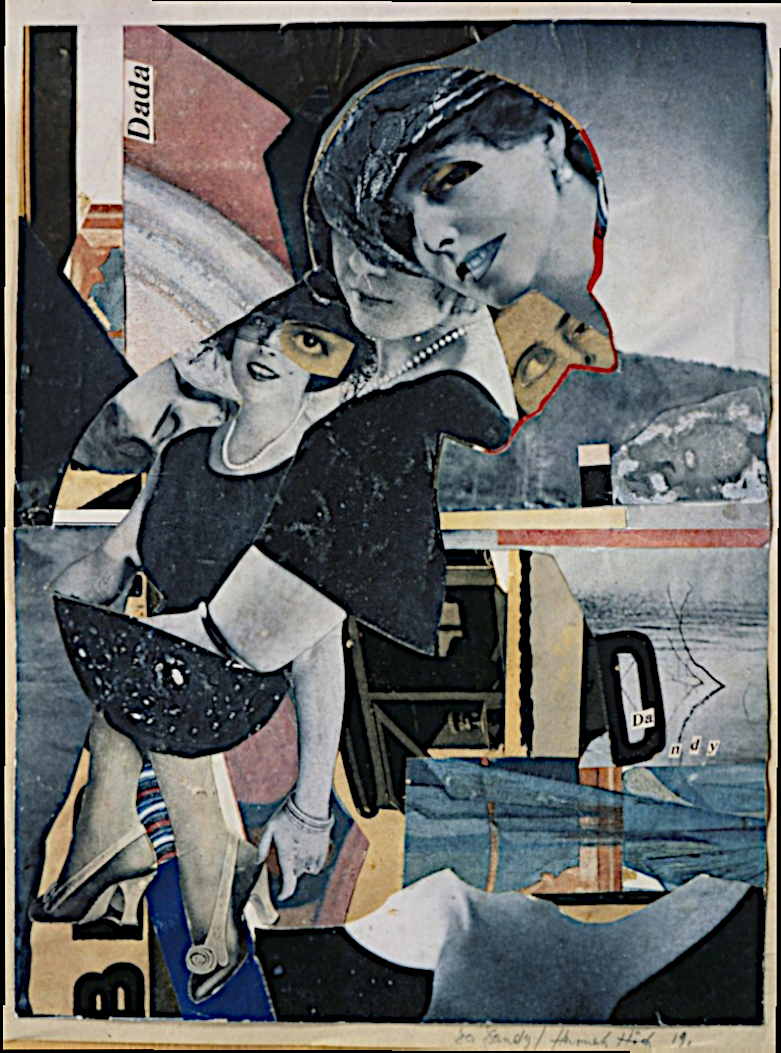
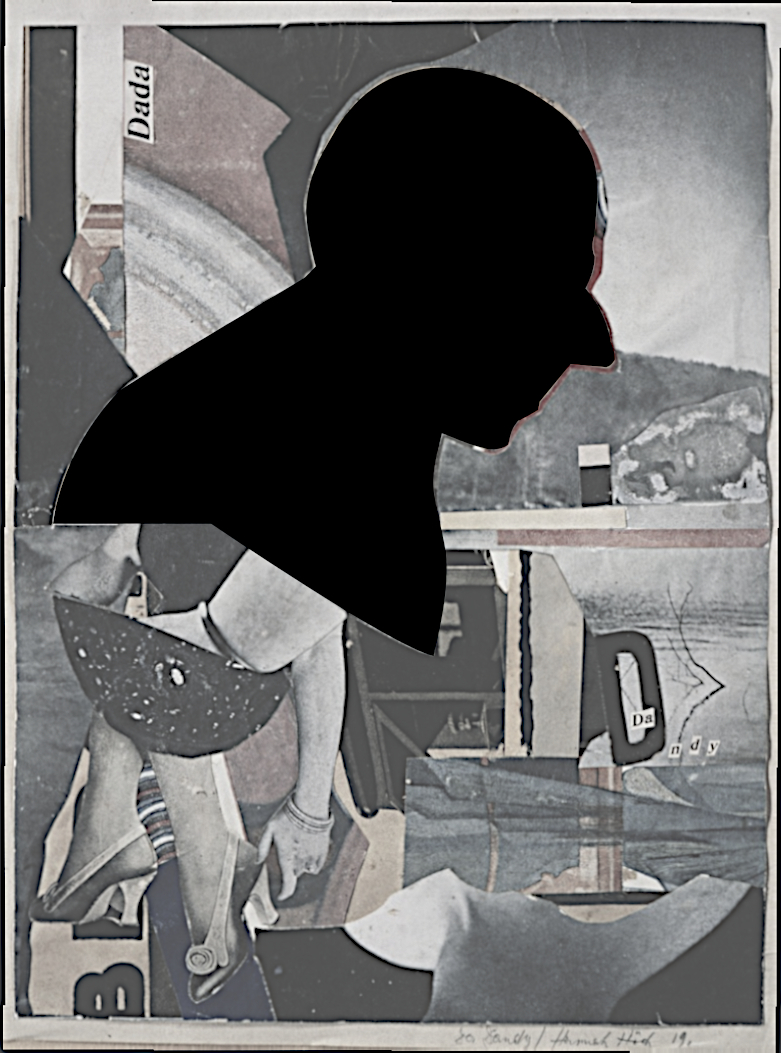
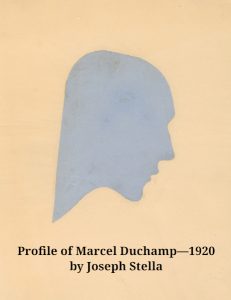
The Profile Motif
Across decades, one image of Duchamp recurs:
his head in profile, with a downward gaze.
It appears in early portraits, documentary photos, and his own constructions.
Not assertive. Not confrontational.
A posture of retreat—or scrutiny. Or both.
This motif became something like a visual signature:
a stance that evaded, but also confessed.
So when a figure in Da-Dandy emerges with that same head tilt,
the same downcast profile—we have to ask:
Was it a coincidence?
Or a pointed gesture. Pointing not only to Duchamp, but also referencing some of his private artistic vocabulary.
Possibly Too Much of it.
